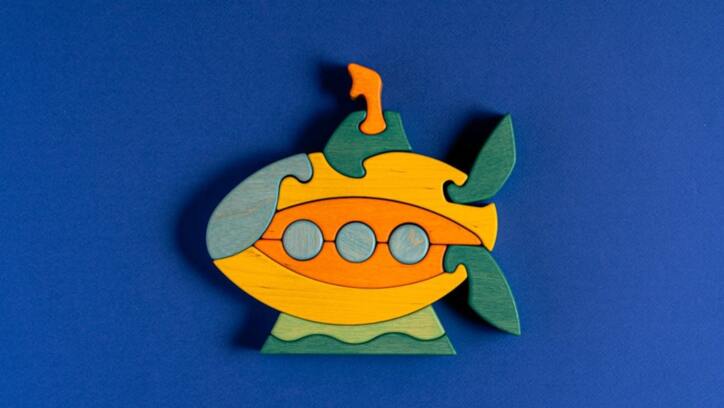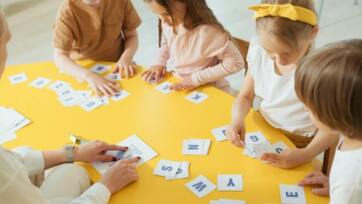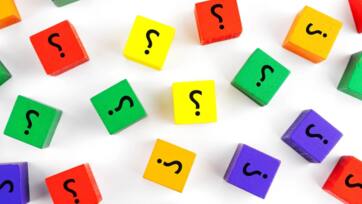Introduction
The foundation of future learning depends on problem-solving abilities which young children must master. The cognitive development stage of preschoolers enables them to recognize basic shapes and patterns, improving their understanding of their environment. Young children develop better pattern recognition ability, and their logical reasoning is enhanced alongside improved critical thinking through this early skill learning. Engaging quizzes which bring educational value into entertaining formats represent one of the most effective methods to build these important skills in children.

The Importance of Shapes and Patterns in Early Learning
The fundamental framework of early childhood education depends on the concepts of shapes and patterns. Children succeed at recognizing circular, square, triangular and rectangular shapes, which enables them to group objects and comprehend space positions. Patterns provide children with knowledge about sequences as they learn predictability. Children can establish observation and logical thinking skills by working with shapes combined with patterns in their learning. Children develop vital problem-solving relationships through geometric learning, which is essential in their later academic growth. Young children require incorporating shapes and patterns within their learning activities to benefit their cognitive development.
Quiz 1: Shape Matching Adventure
Children begin the first quiz by solving a fun activity that asks them to match shapes such as circles, triangles, and squares. Students must pair the given shapes with matching objects on the displayed picture set. A circle symbolizes a wheel, and a triangle represents a slice of pizza, yet a square symbolizes a book in this activity sequence. The first quiz merges an opportunity to recognize shapes with a challenge to establish matches between abstract concepts and concrete objects. Children enjoy participating in this activity because educational fun and interactive visuals make learning exciting. The activity improves memory function while developing classification abilities to serve as a perfect problem-based learning opportunity.
Quiz 2: Pattern Completion Challenge
In the second part of the quiz students must solve the open spaces in a pattern. The activity displays shapes and colors which children need to use to figure out the following element in the sequence. A sequence demonstrates a "red, blue, red, blue" order; the child must pick the upcoming colour from the series. The quiz begins by prompting students to understand pattern recognition and sequencing since these capabilities form the basis of logical thinking and solving problems. Children gain critical thinking skills through playful sequences because pattern repetition enables them to predict sequence progress.
Quiz 3: Shape Sorting Race
The shape sorting race quiz presents children with different shapes which require their placement into suitable containers according to their distinguishing characteristics. Children put spheres into one container, followed by rectangles in a second container and triangles in the third. The sorting task exists to be finished in the fastest available time. The shape sorting race quiz helps children develop spatial recognition ability, classification competencies, and object characteristics identification skills. Children develop enhanced dexterity through the quiz because they must handle the shapes before correctly positioning them within the designated containers. An interesting aspect of the competition is that it creates student enthusiasm, improved attention, and effective problem-solving abilities.
Quiz 4: Color and Shape Pattern Matching
Children face increasingly advanced pattern problems in this quiz because it connects colours with shapes. The quiz presents a repeated sequence, including "red circle followed by blue square after red circle and followed by blue square", and students must determine which shape, along with colour, will complete the pattern. Providing children with patterns containing shape and colour variables makes this quiz more complex and forces children to apply higher-order thinking to their observations. The activity builds their capacity to multitask while learning because they must handle multiple aspects simultaneously.
Quiz 5: Shape Detective Mystery
The shape detective mystery quiz allows preschoolers to solve mysteries through investigative work, which involves finding shaped objects within a visual scene. The exercise demands players to locate all the circles with all the triangles that appear in an image among houses, trees and cars. During the shape detection task, children enhance their ability to focus on details and maintain focus. Through this quiz, children practice critical thinking because they need to search for particular items to solve the puzzles. Children stay committed to shape learning because the quiz gameplay as a detective builds an engaging experience which keeps them active in solving mysteries.
How Quizzes Support Cognitive Development
Quizzes offer more than shape and pattern education since they fundamentally contribute to a child's mental growth. Preschool children's cognitive development includes perceiving and memorizing various things while paying attention to details and solving problems. Participation in quizzes teaches children better object categorization and linking between different ideas through logical pattern understanding of relationships.
The Role of Play in Learning
Early childhood education depends heavily on play activities because they are fundamental. The educational value of games exceeds mere amusement since they allow children to discover and learn naturally. The quizzes explained in this document unite enjoyable learning features with interactive aspects of play to help children solve problems in a playful environment. The quiz experience lets children know patterns and shapes while cultivating their interest in education. Play activities excite children to explore their discoveries independently, thus establishing lasting learning practices.
How to Incorporate Shape and Pattern Quizzes into Daily Life
Educators and parents can naturally integrate shape and pattern quizzes into daily interactions to develop a child’s problem-solving ability. Household objects can naturally lead to informal practice when children search for environmental shapes or arrange items into patterns. Children can identify all room triangles through an active question or build block patterns as a quiz. Daily life activities that combine shape and pattern exercises enable learning through enjoyment, developing children's problem-solving abilities without pushing work-oriented responsibilities.
Collaborative Learning with Group Quizzes
Students participating in group quizzes benefit two-fold because these sessions allow teamwork while resolving problems. Children who complete shape and pattern quizzes collectively develop ideas distribution, peer communication, and teamwork abilities. Children build social skills and emotional intelligence through teamwork, which supplements their problem-solving ability. Combining different group member perspectives during quizzes leads children to discover innovative solutions that separate thinking would have missed. Collaborative learning creates stronger social bonds that promote good social conduct between students.
The adjustment of quiz materials targets various methods students use to learn.
Every student has distinct ways of learning, so all quizzes must be tailored to their particular abilities. The learning techniques effective for each student vary as some need visual resources such as charts and illustrations but other students learn better with hearing-based guidance. Activities under quiz segments can accept modifications that integrate sounds and spoken directions to assist children while doing their assignments. Various quiz formats should be available to students since each child needs different support levels and time to finish their quizzes, thus ensuring proper engagement and appropriate challenge.
Technology in Shape and Pattern Quizzes
The current digital technology is an effective resource to boost the quality of shape and pattern quizzes. The interactive educational software and online websites provide multiple engaging quizzes that use vibrant visuals and auditory effects to attract preschoolers. Digital quizzes feature virtual stickers and badges as rewards to spur children toward finishing tasks and maintaining their practice sessions. Shaping recognition skills and understanding patterns becomes more fun with technology, although children need screen time management against other educational methods. The difficulty level of these digital quizzes adapts to meet the child’s current achievement progress better.
Conclusion
Closer integration of imaginative shape and pattern quiz formats within preschool educational environments creates an excellent foundation for improving students' problem-solving abilities. Through these quizzes, children learn about shapes and patterns and simultaneously develop better critical thinking abilities, improve their memory, and acquire logical reasoning skills. Participating in interactive educational activities enables children to improve their cognitive, motor, and social skills necessary for complete development. Young learners develop a steady academic foundation for the future through entertaining quizzes on traditional paper platforms and modern digital systems.









